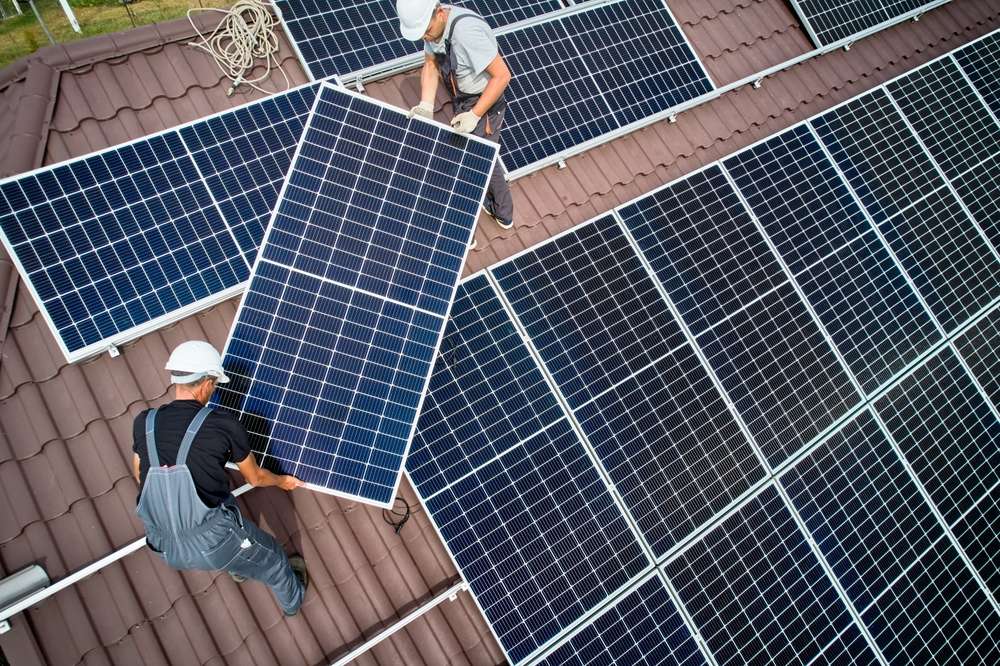Exploring Solar Panels: A Renewable Option for Homes and Businesses
Solar power has emerged as a viable renewable energy solution for both residential and commercial applications. As climate concerns grow and energy prices fluctuate, many property owners are considering solar panels as an alternative to conventional electricity sources. This sustainable technology harnesses the sun's energy and converts it into usable electricity, offering environmental benefits while potentially reducing long-term energy costs for homes and businesses across India.

How Solar Panels Work
Solar panels, also known as photovoltaic (PV) panels, operate through a relatively straightforward process. When sunlight hits the silicon cells within the panels, it creates an electric field across the layers, generating direct current (DC) electricity. This DC electricity then flows to an inverter, which converts it into alternating current (AC) electricity—the type used in homes and businesses. The converted electricity then powers appliances and lighting systems, with any excess energy either stored in batteries or fed back into the electrical grid.
The efficiency of solar panels typically ranges between 15-22%, depending on the panel type and quality. Monocrystalline panels offer higher efficiency rates but come at a premium price, while polycrystalline panels provide a more affordable option with slightly lower efficiency. The panels require minimal maintenance beyond occasional cleaning and can generate electricity for 25-30 years, although their efficiency gradually decreases over time.
Factors to Consider Before Installation
Several critical factors should be evaluated before installing a solar panel system. First, assess the solar potential of your property by examining roof orientation, angle, and potential shading issues. South-facing roofs in India typically receive the most sunlight, making them ideal for solar installations. Additionally, consider the structural integrity of your roof and whether it can support the weight of the panels.
System sizing also requires careful consideration based on your energy consumption patterns. Analyzing your electricity bills will help determine the appropriate system capacity. Local climate conditions play a significant role as well—regions in India with more annual sunshine hours, like Rajasthan and Gujarat, may yield greater solar output compared to areas with frequent cloud cover or monsoon conditions.
The regulatory environment is another important factor. Research available net metering policies in your state, which allow you to sell excess electricity back to the grid. Additionally, investigate central and state government incentives, subsidies, and tax benefits that can significantly reduce the initial investment cost.
Solar Panels vs. Conventional Power
When comparing solar energy to conventional power sources, several distinctions become apparent. From an environmental perspective, solar power produces minimal emissions during operation, whereas fossil fuel-based electricity generation contributes significantly to air pollution and greenhouse gas emissions. A typical residential solar system in India can prevent approximately 3-4 tonnes of carbon dioxide emissions annually.
From a financial standpoint, solar energy requires a substantial upfront investment but offers long-term savings. Conventional electricity costs continue to rise annually, while solar power provides relative price stability after the initial installation. The payback period for solar systems in India typically ranges from 5-7 years, depending on local electricity tariffs and solar conditions.
Reliability and independence represent another contrast. Solar energy provides greater energy autonomy, reducing dependence on the electrical grid and mitigating the impact of power outages, which remain common in many parts of India. However, solar generation is intermittent, producing electricity only during daylight hours unless battery storage is incorporated.
Cost Considerations for Solar Panel Installation
The cost of installing solar panels in India varies significantly based on system size, component quality, and installation complexity. For residential installations, prices typically range from ₹40,000-60,000 per kilowatt (kW) of installed capacity. Commercial systems benefit from economies of scale, with costs usually between ₹35,000-50,000 per kW for larger installations.
A comparison of typical solar panel options available in the Indian market:
| Panel Type | Efficiency Range | Average Cost per kW | Typical Warranty |
|---|---|---|---|
| Monocrystalline | 18-22% | ₹45,000-60,000 | 25 years |
| Polycrystalline | 15-17% | ₹40,000-50,000 | 25 years |
| Thin Film | 10-12% | ₹35,000-45,000 | 15-20 years |
Prices, rates, or cost estimates mentioned in this article are based on the latest available information but may change over time. Independent research is advised before making financial decisions.
Beyond panel costs, a complete solar system requires inverters (₹15,000-40,000), mounting structures, wiring, and installation labor. Battery storage, while optional, adds ₹8,000-15,000 per kWh of storage capacity. Government subsidies can offset these costs by 20-40% for residential users, depending on system size and state policies.
Key Takeaway
Solar panel systems represent a significant but potentially rewarding investment for homes and businesses in India. While the initial costs may seem substantial, the long-term benefits—reduced electricity bills, energy independence, and environmental contribution—often justify the investment. Government incentives continue to make solar more accessible, while technological improvements steadily increase efficiency and decrease costs.
Before proceeding with installation, thorough assessment of your property’s solar potential, careful selection of quality components, and understanding of local regulations are essential. Consulting with multiple reputable solar installers can provide customized recommendations and accurate cost estimates based on your specific energy needs and property characteristics. As India continues its renewable energy transition, solar power remains at the forefront of sustainable solutions for meeting the country’s growing energy demands.




